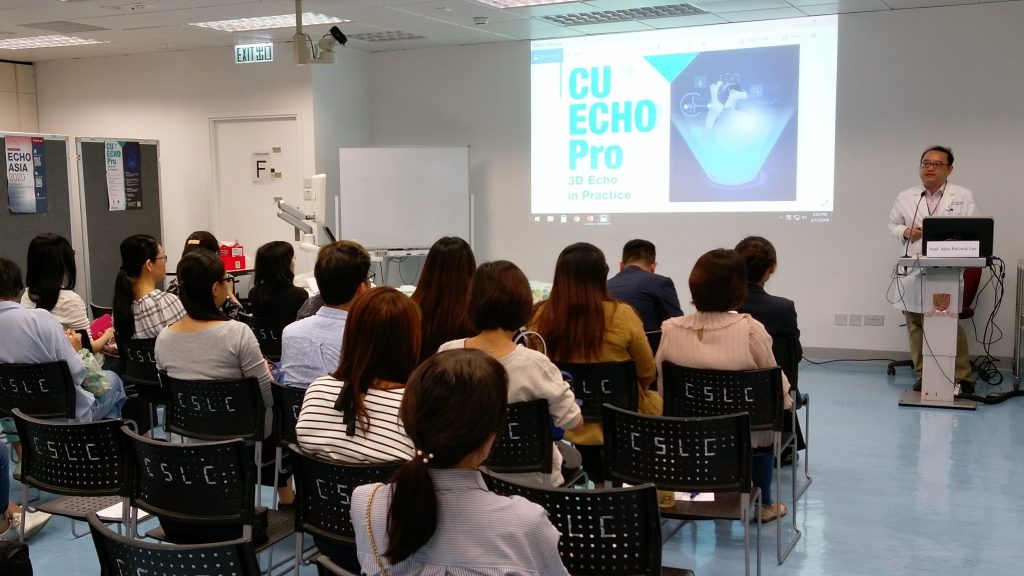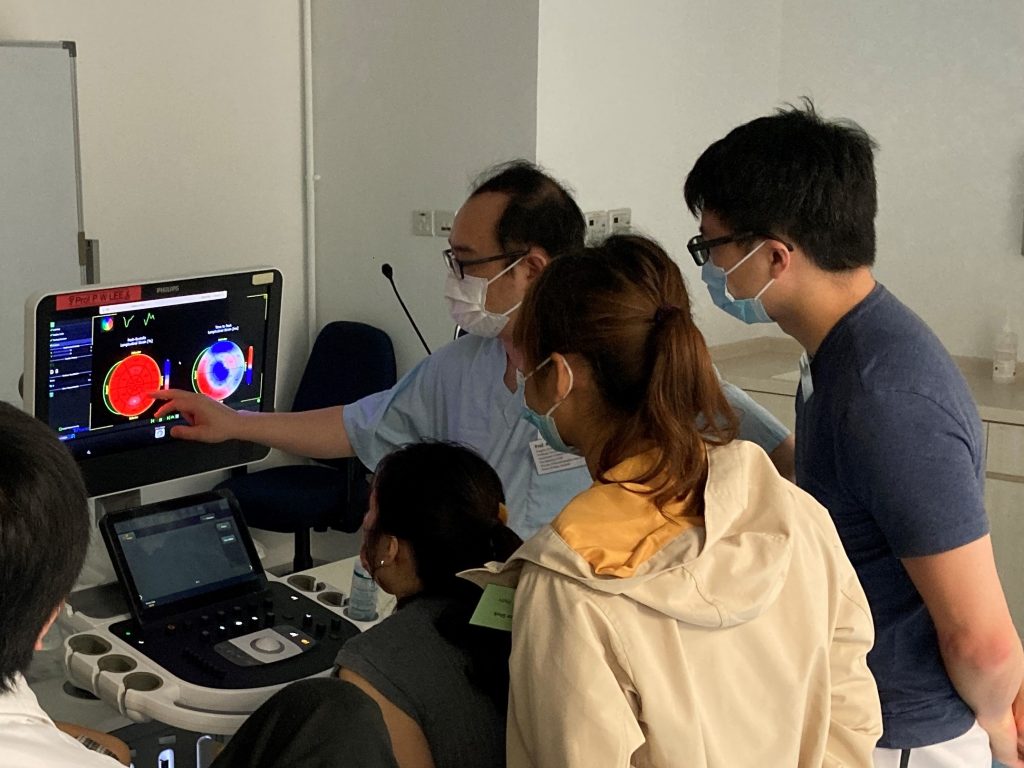Since Primary Four, Max has suffered burning sensations in his limbs and fingertips, especially during exercise or after PE lessons. Misdiagnosed with juvenile arthritis, his condition worsened and would spend sleepless nights in agony during secondary school. It was only after countless doctor’s appointments and tests, that he was finally diagnosed with Fabry disease. Cardiology specialist Dr. Alex Lee calls on Hongkongers to learn about this rare genetic condition: “A lack of understanding and initiative to learn about the disease could delay proper treatment.” Parents should dig into their family health history to better prepare for potential hereditary mutations in their children.
Classic and late-onset Fabry disease
Rare diseases are defined as ones that affect only a small percentage of the world’s population. Among more than 8,000 discovered rare diseases, many are due to genetic mutations. Fabry disease is an X-linked hereditary disorder that prevents the body from producing the enzyme responsible for breaking down the metabolic waste known as glycolipids. The resulting glycolipid accumulation in the organs could result in a wide range of symptoms. Fabry disease comes in two forms. Symptoms of classic Fabry disease appear during childhood or adolescence. Patients would experience neuralgia and a burning sensation in their limbs that could sometimes make standing difficult. Dr. Lee says, “Children often cry as they cannot communicate their pain verbally. Unfortunately, this is often misinterpreted as bad behaviour by adults.” Kids who are in too much pain to participate in PE classes may be labelled as lazy or problem children by teachers. Some symptoms may even affect patients’ day-to-day life, including hypohidrosis, gastrointestinal issues and frequent bowel movements. Diagnosis, however, is difficult as some of these symptoms bear similarities to other illnesses.
Patients of late-onset Fabry disease normally do not experience symptoms until they are in their 40s. These include cardiac hypertrophy, shortness of breath, swollen feet, arrhythmia, as well as a few symptoms similar to those of heart diseases such as high blood pressure and heart failure. Classic Fabry disease is easier to detect as its symptoms are more noticeable and they affect various organs like the heart, kidneys and nervous system; while neurological symptoms are typically absent in the late-onset type. Because late-onset Fabry disease usually comes with heart and kidney issues, It is easily confused with other illnesses. Some patients are only diagnosed after 70 to 80 years where treatment is much less effective due to cardiac fibrosis. Dr. Lee states, “Most people do not have a deep understanding of Fabry disease. Without recent screenings, studies and diagnosed cases, our understanding of it only came from textbooks. Not all doctors can recognize patients with such conditions.” He is devoted to raising awareness of Fabry diseases among patients and doctors with the aim of offering early diagnosis and treatment. Parents are advised to stay vigilant to both their and their children’s health if they have a family history of Fabry disease

Fabry disease screening for high-risk groups
Clarifying family health history and conducting screenings are essential because Fabry disease is caused by a genetic mutation on the X chromosome. With only one X chromosome, males have incidence rates of Fabry disease; females, on the other hand, may not experience any symptoms as they still have one normal X chromosome to produce the enzyme. Dr. Lee explains, “Male carriers only pass the disease to their daughters but not their sons. On the other hand, each offspring of a female carrier has a 50% chance of inheriting the mutation. Therefore, genetic counselling and familial screenings are crucial.”
Although with only around 50 to 60 patients in Hong Kong, Fabry disease has been included in the standard diagnostic service in public hospitals after doctors discovered its correlation with cardiac hypertrophy from screenings done from 2017 to 2019. This study showed that screenings for high-risk groups could help identify asymptomatic patients and offer them the timely treatment they need.
Parents may wonder whether screening newborns are necessary. Dr. Lee answers, “The purpose of newborn screening is to detect potentially fatal or disabling conditions as early as possible. Such early detection allows treatment to begin immediately to save lives. For Fabry disease, because some carriers of the gene mutation may not develop symptoms or signs of the disease, and the benefit of starting the treatment before the onset of symptoms is unclear. Therefore, the benefit of newborn screening for Fabry disease is controversial at the moment. We will need more research in this area.”
Enzyme replacement therapy is effective in treating symptoms
Fabry disease has a massive impact on patients’ daily lives. Those who suffer from the disease often show symptoms of heart failure, such as shortness of breath, chest pain and low physical activity. Patients in their 50s or 60s may experience shortness of breath after walking a flight of stairs or struggle to breathe even during their sleep. Poor blood circulation can lead to blood clots across various parts of the body, resulting in fatigue and swollen feet. Some may even face sudden death due to cardiac arrhythmia. Although there is no cure for Fabry disease, this treatment is generally effective in treating symptoms and reducing patients’ risk of death.
People suffering from Fabry disease are unable to produce certain enzyme that breaks down glycolipids in the body. Enzyme replacement therapy supplements the body with the missing enzyme through intravenous injections. Patients must receive an injection every two weeks, which takes from a little more than an hour to three hours. Dr. Lee elaborates, “This is a lifelong treatment. The symptoms will return if the injections stop.”
Due to high R&D costs and a small population of patients, drugs for Fabry disease are more expensive than average. Lifelong treatment of this disease is costly as well. Thanks to the government’s medical aid, eligible patients can receive free treatment in Hong Kong. Anyone in suspicion of having Fabry disease is advised to consult a doctor promptly. The doctor will refer potential cases to further studies with enzyme or genetic mutation tests.
Three warning signs of high-risk patients
IVS4 Fabry disease mutation is more common in Asians such as Japanese, Malaysians and especially Chinese from the southern regions. Therefore, Hongkongers should have a higher awareness of this disease compared to Westerners. Dr. Lee points out that higher awareness of Fabry disease will result in more accurate diagnoses, explaining the rise in cases rather than higher incidence rates. Other than cardiac hypertrophy often found in Fabry patients, Dr. Lee shares three signs to look out for to help identify the symptoms of Fabry disease.
- Shortness of breath, swollen feet and heart failure.
- Cardiac arrhythmia: slow heart rate, in particular, may be due to obstruction of the heart’s electrical system by accumulated glycolipids. Those aged between 40 to 50 years old who have a pacemaker not because of an ageing heart should be even more alert.
- Those with ancestors are from Southern China, such as Teochew and Guangdong. Dr. Lee illustrates, “Fabry disease has been shown to have a strong correlation with population and geography. Northern Chinese are less likely to carry the IVS4 Fabry disease mutation than Southern Chinese. Of the 500 people in our screening, we identified eight IVS4 Fabry disease patients from Guangdong and Zhejiang. Five of them happen to be Teochew descendants. As genotype distribution may be influenced by geography, Southern Chinese are considered a high-risk group.”

The founder effect of Fabry disease
When a group of individuals with a genetic mutation becomes isolated from a larger population. Over time, the mutated gene will spread to cause a relatively higher percentage of the new subpopulation to inherit the disease. This is called the founder effect, which is also applicable to Fabry disease.
According to a study in Taiwan, one in 1,200 newborns carries the mutated gene of Fabry disease, which is a much larger proportion than that of other regions where only one in more than 10,000 are found with the disease. Taiwan is
an island: people who moved there hundreds of years ago might have carried the mutated gene and spread it in Taiwan over time. Many experts agree that Taiwan’s case can be explained by the founder effect. Most patients suffer from late-onset Fabry disease: as reproductivity remains unaffected by the condition, the mutation is passed on across generations until it became a commonly seen condition. The prevalence of the Fabry disease mutation in Kagoshima, Japan is an example of the founder effect as well.

